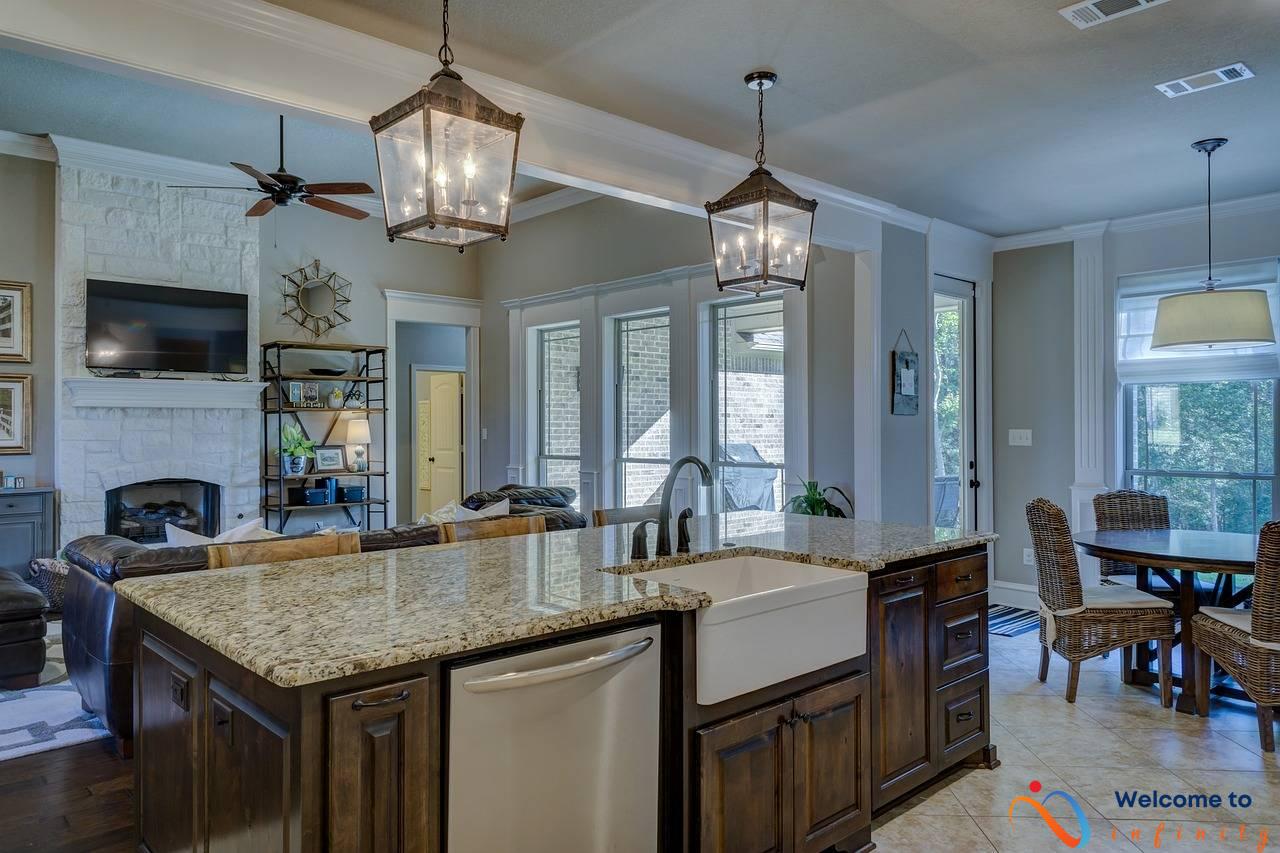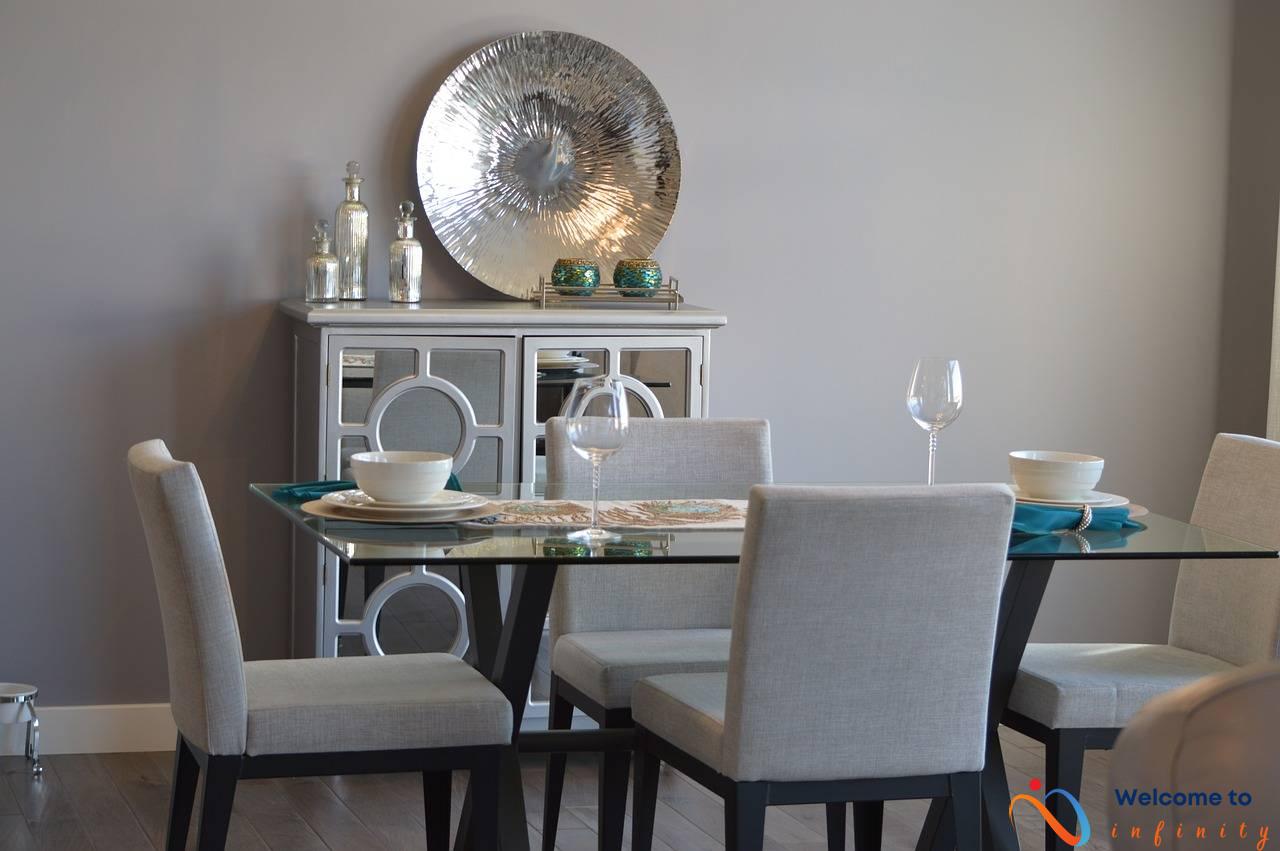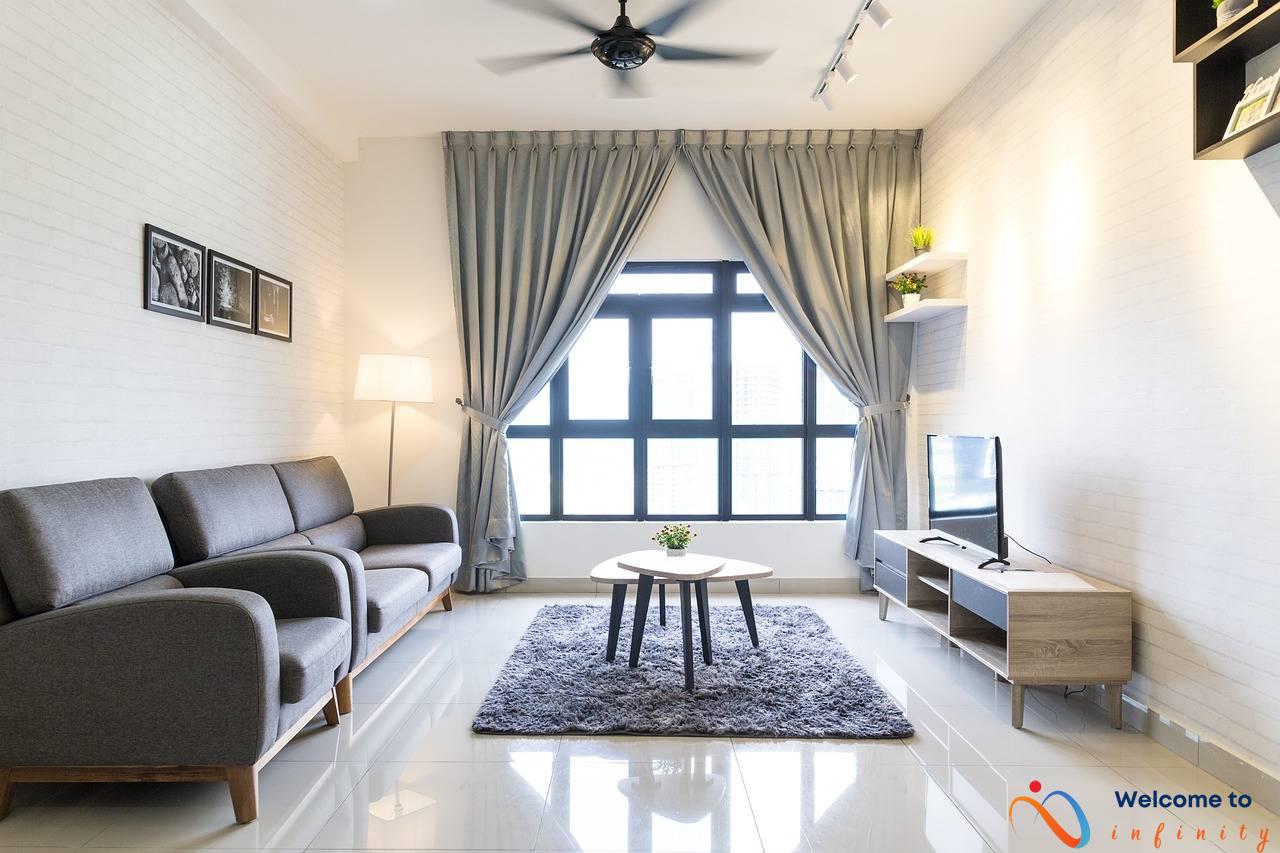If you're struggling to hang curtains like a pro, fear not! Here, we will walk you through each step so you can achieve a perfect, professional look every time.
First and foremost, choosing the right curtain rod is crucial for a successful curtain-hanging experience. Choose a rod that complements your window size and style, and also complements your curtains. This will ensure that your curtains hang properly and look their best.
Next, measuring your window correctly is also important to achieve a perfect fit. Determine the ideal length for your curtains based on your desired style and the length of your curtains. Consider the curtain style and account for any drapery hardware that may add length.
Once you've determined the length, it's time to choose the curtain width. This can be tricky, but it's important to ensure that the width is appropriate for your window size. Consider the style of your window and the desired look you're going for, and select a width that complements both.
Once you've chosen the perfect rod, measured your window, and selected the appropriate width and length, it's time to hang the curtains at the right height. This is crucial to achieving a professional-looking finish. Overlapping curtains can add a dramatic, draped look, while a classic skim or floor-length style can add elegance and sophistication.
Properly hanging and arranging your curtain panels is also essential to achieve the professional look you're striving for. Ensure that the panels are evenly spaced to create balance and that you use curtain rings and clips to hang them with ease. And don't forget to fold and pinch your curtains for an updated look!
Finally, the finishing touches are what will truly make your curtains pop. Adjust for sunlight, choosing the right angle for optimal light control, and choose tiebacks and holdbacks that complement your curtains to add style and sophistication.
By following these expert tips, you can hang your curtains like a pro every time. Happy hanging!
Choose the Right Curtain Rod
When it comes to hanging curtains, selecting the right curtain rod is just as important as choosing the perfect curtain style. Curtain rods come in various materials, sizes, and styles, so it's important to choose the appropriate one that fits both your window and curtain. Here are a few tips on selecting the appropriate curtain rod for your window.
Firstly, determine the purpose of your curtains. Are they purely decorative, or do you need them to block out sunlight and provide privacy? If you need curtains for both reasons, you may need to choose a heavier and sturdier curtain rod that can hold the weight of your curtains.
Next, measure the width of your window and ensure that the curtain rod you choose is at least one inch longer on each side. This ensures that the curtains can be drawn back fully and won't block the view outside the window when opened.
Consider the material of the curtain rod. If you want a modern or minimalist look, a sleek metal rod might be ideal. If you're going for a more traditional or rustic look, a wooden rod might be a better choice.
Finally, choose a style that complements your curtains. Do you have long, flowing curtains? A simple rod with minimal design might be your best bet. Do you have patterned or colorful curtains? Consider a decorative rod that adds a pop of color or texture.
By following these tips, you can ensure that your curtains hang perfectly every time with the appropriate curtain rod.
Measure Your Window Correctly
One of the most important factors to consider when hanging curtains is measuring your window correctly. Proper measuring techniques ensure that your curtains fit perfectly and look great. Here are some tips for measuring your window accurately:
- Use a metal tape measure to get precise measurements
- Measure the width and height of the window frame or the area where you want your curtains to hang
- Measure twice to ensure accuracy
- Take into account any obstacles, such as window handles or locks, that may affect the curtain placement
- If you want your curtains to cover the entire window, add 4-6 inches to the width and 2-3 inches to the height of your measurements
When measuring for curtain length, there are a few additional factors to consider:
- Determine the desired length of your curtains based on your personal style preference and the function of the room
- If you want your curtains to puddle on the floor, add an additional 2-3 inches to the length of your measurement for a dramatic look
- If your curtains will be hanging from drapery hardware, take into account the length of the hardware when calculating your length measurement
- Consider the style of your curtain – a tailored curtain may be shorter than a flowing curtain style
By following these measuring techniques, you can ensure a perfect fit and elevate the look of your curtains.
Determine Curtain Length
When it comes to determining the perfect length for your curtains, it's important to consider a few key factors. Firstly, you want to measure the height of your window from the floor to the top of the frame. This measurement will be your starting point for determining the length of your curtains. Next, you'll need to decide on the style of your curtains. For a classic look, you may want to opt for curtains that skim the floor. Alternatively, you may prefer a more dramatic effect by choosing curtains that pool on the floor. It's important to keep in mind that the style of your curtains will affect their length. If you're unsure about the best length for your curtains, a general rule of thumb is to add an extra 2-3 inches to your window height measurement. This will ensure that your curtains hang just above the floor without touching it. another factor to consider is the type of drapery hardware you'll be using to hang your curtains. If you'll be using standard curtain rods, you'll want to make sure that your curtains are long enough to cover the rod when they're closed. Alternatively, if you're using clip rings or other types of hardware, you may need to adjust your curtain length accordingly. Overall, determining the ideal length for your curtains is an important step in achieving a polished and professional look. By taking these factors into account and measuring carefully, you can easily hang your curtains like a pro.
Consider Your Curtain Style
When it comes to hanging curtains, the style of curtain you choose can affect its length. For example, traditional and formal curtains usually have floor-length drapes that pool on the floor, while modern and contemporary curtains typically have a shorter hemline that just slightly grazes the floor or “skims” it. To determine the ideal length for your curtains, you should take into account the style of your curtains as well as the look you want to achieve.
Here are some tips to consider when choosing the length of your curtains based on their style:
– Traditional and formal curtains: If you are going for a traditional or formal look, long and flowing curtains that puddle on the floor are your best choice. This style of curtain is usually made with heavy and thick fabrics, such as velvet, silk, or brocade, that give them a luxurious and elegant look.- Modern and contemporary curtains: If you prefer a minimalist and clean look in your room, a shorter hemline that “skims” the floor or just grazes it is more appropriate. This style of curtain is usually made with lightweight fabrics such as linen, cotton, or voile, that drape more easily and create a breezy and relaxed atmosphere.- In-between styles: If you want something in between traditional and modern, you can choose a hemline that falls somewhere in the middle. This length should be just above the floor, about 1-2 inches from it, or slightly below the window sill. This style of curtain is suitable for casual and informal rooms, such as a living room or bedroom.
To determine the ideal length for your curtains, consider the overall style of your room, the height of your ceilings, and the amount of sunlight you want to let in. You can also use a measuring tape to measure from the top of the curtain rod to the desired hemline and subtract an inch or two to give your curtains a slightly off-the-floor look. Remember to take into account any drapery hardware such as rings or hooks that might affect the length of your curtains. By considering your curtain style, you can ensure that your curtains are the perfect length for the look and feel you want to create in your room.
Account for Drapery Hardware
When it comes to hanging curtains, the hardware you choose to use can affect the length of your curtains. It's essential to account for the hardware and adjust your curtain length accordingly to ensure a professional and polished look. Here are some expert tips for adjusting your curtain length based on the hardware used to hang it.
If you're using a curtain rod with decorative finials, make sure to measure from the outside of each finial for accurate sizing. If you're using a standard curtain rod, measure from end to end and add a few inches for rod clearance.
For curtains that hang from clips or rings, measure from the bottom of the clip or ring to the desired length. Be sure to account for the added height of the clip or ring.
If you're using a tension rod, make sure to measure the length of the rod and add a few inches for proper fitting. It's also essential to consider the diameter of your tension rod and adjust the curtain width accordingly for the best fit.
Another critical factor to consider when accounting for hardware is the type of pleating you plan to use. The pleating will affect the overall length of your curtains, so make sure to account for any additional length needed for pleats or gathers.
In conclusion, accounting for your drapery hardware is crucial when hanging curtains. Take the time to measure correctly and adjust your curtain length accordingly. With the proper fit, your curtains will look polished and professional.
Adjust for Curtain Width
Choosing the right curtain width is crucial in achieving a professional look for your window treatment. There are a few tips to keep in mind when selecting the ideal width for your curtains.
- Measure your window: Start by measuring the width of your window frame. A general rule of thumb is to choose curtains that are 1.5 to 3 times wider than the width of your window for a full, draped look.
- Consider the stacking space: If you plan to open and close your curtains frequently, you'll need to choose a width that will allow for enough stacking space without blocking your window when open.
- Account for rod length: Be sure to factor in the length of your curtain rod when selecting your curtain width. A curtain rod that extends beyond your window frame will require wider curtains to cover the extra space.
- Think about the style: The style of your curtains can also impact the ideal width. For example, if you plan to use a tie-back or holdback, you'll need to choose a wider curtain to ensure there is enough fabric to create the desired look.
By taking these considerations into account, you'll be able to select the right curtain width for your window, resulting in a beautifully draped and polished look.
Hang Curtains at the Right Height
When it comes to hanging curtains, height plays a significant role in achieving a professional and polished look. Hanging curtains too high or too low can make the room feel unbalanced and visually unpleasing. Determining the right height to hang your curtains depends on a few factors, such as the ceiling height, window size, and curtain style.
The general rule for hanging curtains is to install the curtain rod about 4-6 inches above the window frame. This placement creates an illusion of height and depth in the room, making the window appear larger. However, if you have high ceilings, you can hang the curtain rod closer to the ceiling to make the room feel grander.
Before you hang the curtains, measure the distance from the top of the curtain rod to the floor to ensure the proper length. The traditional curtain length options are either skim or floor length. Skim length curtains end one inch above the floor, while floor-length curtains just touch the floor. Keep in mind that the curtain length can affect the height at which you hang the rod.
If you prefer a more dramatic look, you can create a draped effect by overlapping the curtains above and below the window. When doing this, ensure that the overlapping sections are evenly spaced to maintain balance. If you have a small window, you can add height by mounting the rod higher and hanging the curtains higher to create a visual illusion of a taller window.
When hanging your curtains, you also need to consider the hardware you plan to use to hold them back. If you're using tiebacks or holdbacks, install them at the appropriate height of about two-thirds up the length of the curtains to create the perfect drape. Finally, adjust your curtains' angle to let in or block sunlight while maintaining a cohesive look.
Overlapping Above and Below
If you're after a draped look for your curtains, overlapping them both above and below the curtain rod is the way to go. This style is great if you have a more formal room or if you want to add some drama to your window treatments.
To achieve this style, you'll need to start with a longer curtain rod. Hang the first panel on the inside of the rod, allowing the excess fabric to drape over the rod. Next, take the second panel and overlap it with the first one, ensuring that the overlap is as close to the edge of the rod as possible. This will ensure that the panel falls nicely.
If you don't want the panels to overlap too much, you can adjust the overlap by pulling the second panel higher up the rod. This will create a more spaced-out look. Make sure to check that the panels are level and even on both sides before moving on.
Once you have the overlap at the desired length, adjust the folds for each panel. Start with the top panel and create a fold at the top edge of the overlapping fabric, tucking it behind the rod. You can pin it in place if necessary. Then, create your folds in the remaining fabric. Repeat the process for the bottom panel.
Finally, adjust the panels as needed to create a uniform look. You can use curtain rings or clips to hold the panels in place, especially if they are particularly heavy. And that's it, you've now created a beautifully draped look for your curtains!
Skim or Floor Length
When it comes to the length of your curtains, you have two classic options to choose from – skim or floor length. The choice ultimately depends on your personal preference and the style of your room.
Skim length curtains are typically around 1-2 inches above the floor and are a great option if you want to show off your flooring or have furniture placed directly under the window. This length is also ideal for high-traffic areas where longer curtains may be a tripping hazard.
On the other hand, floor length curtains are longer and fall all the way to the floor. They offer a more formal and elegant look, particularly when paired with textured fabrics or intricate patterns. Floor length curtains are also a great option if you want to block out light or add insulation to your windows.
When deciding between skim or floor length curtains, consider the overall style and function of your room. If you have a more traditional or formal space, floor length curtains may be the better option. However, if you prefer a more casual or contemporary feel, skim length curtains are likely the way to go.
Additionally, be sure to measure carefully to ensure your curtains are the right length. Skim length curtains should be around 1-2 inches above the floor, while floor length curtains should just touch the floor or have a slight break. Using a measuring tape and jotting down measurements can help prevent any mistakes in choosing curtain length.
Overall, whether you opt for skim or floor length curtains depends on your style and functional needs. Consider the size and style of your windows, as well as your personal taste, when making your final decision.
Properly Hang and Arrange Curtain Panels
When it comes to hanging and arranging curtain panels, there are a few simple steps you can follow to ensure a professional and polished look. First, start by selecting the appropriate hardware for your curtains. This can include curtain rods, rings, and clips that compliment both your curtains and your overall decor.
Next, measure your window to determine the correct height and width for your curtains. When measuring your curtain length, take into account the style of the curtain as well as any drapery hardware you plan to use. For curtain width, ensure that you select a size that will cover your entire window without looking too bulky or overwhelming.
Once you have your curtains and hardware selected and measured, it's time to actually hang and arrange your panels. Begin by hanging your curtain rods at the appropriate height, making sure they are level and securely anchored to the wall. Then, slide your curtain panels onto the rods, adjusting their position to ensure even spacing between each panel.
If you are using curtain rings or clips, attach them to the top edge of your curtains before hanging them on the rod. You can use these accessories to create a gathered or pleated look, depending on your style preference.
Finally, take a few moments to adjust and arrange your curtains for the perfect final touch. If you want a more casual look, try folding or pinching your curtains to create a soft and breezy effect. For a more tailored look, simply arrange your panels neatly and evenly spaced along the rod.
Following these simple steps will ensure that your curtains are hung and arranged in a way that is both functional and fashionable. So go ahead and mix and match different hardware and styles to create a unique look that complements your personal taste and style.
Evenly Spaced Panels
If you want to achieve a polished and professional-looking curtain display, you need to make sure that your curtain panels are evenly spaced. Here are some tips on how to create a well-balanced curtain arrangement.
First, measure the width of your window and divide that number by the number of panels you want to hang. This will give you the ideal width for each panel. If you're using curtain rings or clips, make sure to include these in your calculations.
Once you have determined the ideal width for each panel, it's time to start hanging them. Start from the center of the window and work your way outwards. This will ensure that your curtains are evenly spaced and symmetrical.
If you're using curtain rings or clips, attach them to the top of each panel and evenly space them out. Make sure that the rings or clips are distributed evenly on each panel to avoid any bunching or sagging.
To make sure that your curtains are perfectly aligned, use a level to check that each panel is hanging straight. Adjust as necessary to achieve a balanced and uniform look.
If you have trouble getting your curtains to hang evenly, try using curtain tiebacks or holdbacks to pull the panels together and create a more cohesive look. Alternatively, you can use a curtain rod with adjustable brackets to make minor adjustments to the height and spacing of your curtains.
By taking the time to carefully measure and arrange your curtains, you can create a beautiful and balanced window display that will add to the overall ambiance of your space. With these tips in mind, you'll be able to achieve a professional-looking curtain arrangement that will impress your friends and family.
Use Curtain Rings and Clips
Are you tired of struggling to hang your curtains? Do you want an easier, more efficient way? Then consider using curtain rings and clips! These handy tools make it simple to hang your curtains perfectly every time.
The first step is to select your curtain rings and clips. Make sure they are the correct size for your curtain rod and the weight of your curtains. There are many different options available, including basic plastic clips or decorative metal rings.
Once you have your rings and clips, it's time to start hanging. First, attach the rings to your curtains evenly spaced apart. Then, clip the rings onto the curtain rod. This method ensures that your curtains will hang straight and evenly spaced, with no sagging or bunching.
Another benefit of using curtain rings and clips is that they make it easy to open and close your curtains. Simply slide the rings along the rod to adjust the position of your curtains.
If you want to add some extra style to your curtains, consider using decorative rings or clips. There are many different designs available, from simple patterns to intricate shapes. You can even mix and match different styles for a more unique look.
Overall, using curtain rings and clips is a simple yet effective way to hang your curtains with ease. So next time you're struggling with your curtains, give this method a try and see the difference it can make!
Fold and Pinch Curtains
Folding and pinching your curtains can give them an updated and stylish look. One technique is the pinch pleat, which is a classic style that creates small folds evenly spaced across the top of the curtain. To create pinch pleats, measure the fullness of your curtain fabric and determine how many pleats you'll need. Then, fold the fabric at each pleat point, pinching the fold with your fingers. Secure each pleat with a pin or clip.
Another technique is the goblet pleat, which creates large and dramatic folds. To create the goblet pleat, fold the fabric so that it forms a cylinder shape. Then, use a strong thread to secure the pleat at the top and bottom, creating a rounded shape. The result is a unique and elegant look.
As an alternative to pleats, you can also achieve a modern look by folding your curtains in a simple and clean way. For example, you can fold the curtains in half horizontally and secure them with a clip or tie for an effortless and chic look.
Remember to consider the style of your curtains when choosing a folding or pinching technique. Thicker fabrics may not be suitable for some pleating styles, while light and airy fabrics may not hold the shape of certain folds. Experiment with different techniques to find the perfect fold and pinch for your curtains.
Final Touches
Now that you've chosen the perfect curtain rod, measured your window correctly, and hung your curtains at the perfect height, it's time for the final touches to achieve a perfectly polished look. Here are some tips:
Taking sunlight into consideration is an essential factor when it comes to hanging curtains. You might want to let in some light or completely block it out. To achieve the desired effect, angle your curtain rod slightly to let in or block the sunlight. This is especially important if the windows face the east or west as they get direct sunlight in the morning and evening
Curtain tiebacks and holdbacks can be used to add style to your curtains, keep the panels in place, and let light in. To achieve a more formal look, you can use tiebacks that match your curtains or opt for a contrasting color to enhance the decor of the room. Holdbacks come in a variety of decorative styles and can be used to create a draped look.
Curtain rings and clips can transform the look of your curtains while also making them easy to open and close. Depending on the style of your curtains, you can choose rings and clips that add to the overall aesthetic of your room. Wooden rings give a rustic feel, while metallic ones provide a more modern vibe.
Finally, the way you arrange your curtains can make a significant difference in their overall appearance. Instead of keeping your curtains simply straight, try folding or pinching them to create a new look. There are many ways to fold your curtains, including rod pocket pinches and flat drapes with tiebacks. Experiment with different ideas to find a look that works best for you.
By paying attention to these final touches, you can take your curtains to the next level and create the perfect look for your space. Remember, every little detail can make a big difference.
Adjust for Sunlight
Adjusting your curtains to control sunlight is an important aspect to consider when hanging curtains like a pro. Depending on the position and orientation of your windows, the amount of sunlight that enters your room can vary throughout the day, affecting the ambiance and temperature inside. Here are some tips to help you adjust your curtains for the perfect amount of sunlight:
Firstly, determine the direction of the sunlight in your room. For east-facing windows, use curtains with light colors to let in natural light. For west-facing windows, choose heavier curtains to block the sun's heat in the late afternoon. For south-facing windows, use sheer curtains to diffuse bright light. For north-facing windows, use thicker curtains that provide insulation and privacy.
Secondly, install several layers of curtains or sheers to give the flexibility of adjusting for the sunlight. This can be done by layering a heavier curtain on a lighter one, or installing sheers that can be drawn or closed. The addition of an opaque liner can provide blackout effects for ultimate privacy and temperature regulation.
Lastly, use curtain tiebacks and holdbacks to manage the amount of light that comes into your room. Tiebacks can be used to pull back the curtains completely, allowing maximum sunlight in. Holdbacks can be used to angle the curtains and adjust the amount of light coming through the window.
In conclusion, adjusting your curtains to control sunlight is essential to creating a comfortable and welcoming environment in your home. With the right choice of curtains and techniques to adjust them, you can easily manage the amount of sunlight entering your room and create a perfect ambiance.
Curtain Tiebacks and Holdbacks
Curtain tiebacks and holdbacks are great finishing touches to add style and functionality to your curtains. Tiebacks are used to hold back curtains to allow natural light to enter a room while holdbacks are used to keep curtains in place when they are open. There are a variety of materials and styles to choose from to match your curtain design.
When selecting tiebacks, consider the fabric and design of your curtains. Simple tiebacks can be made from ribbon or rope while more ornate tiebacks can be made from tassels or beaded cords. For a more modern touch, consider magnetic or hook-and-loop tiebacks. When arranging tiebacks, it is important to ensure that they are positioned at the same height to create a symmetrical look.
Holdbacks come in a variety of styles as well, including decorative metal holders or wood brackets. When selecting holdbacks, consider the color and design of your curtains, as well as the overall aesthetic of the room. Place holdbacks at the same height on each side of the window for a balanced look.
Another option for added style and functionality are curtain rings with attached clips. These can be used to clip curtains in place when they are open or to hang lightweight sheer curtains.
Overall, curtain tiebacks and holdbacks are great additions to your curtains, adding both style and functionality. Consider the fabric and design of your curtains as well as the overall room design when selecting the perfect tiebacks or holdbacks.












